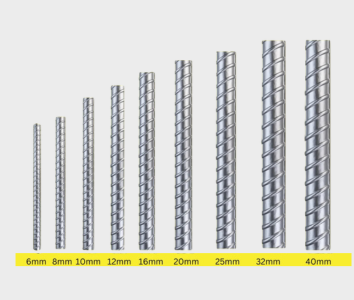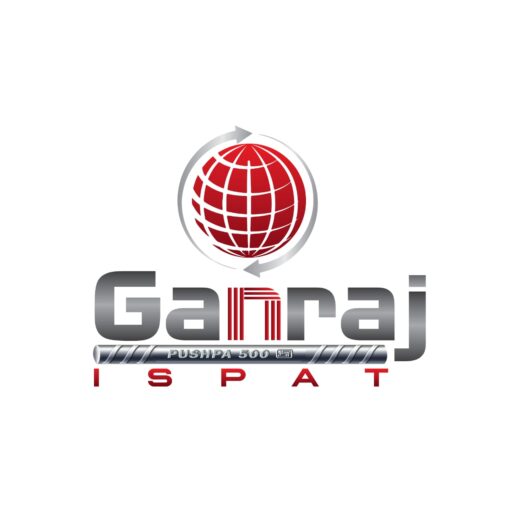
Choosing the right TMT (Thermo-Mechanically Treated) bar is crucial for the strength, durability, and safety of any construction project. With various grades available in the market, it’s essential to understand their differences to make an informed decision.
Each TMT bar grade—Fe-415, Fe-500, Fe-550, and Fe-600—has unique properties that affect flexibility, strength, and overall performance in construction. The right selection depends on factors like load-bearing capacity, seismic resistance, and project type.
In this blog, we’ll dive deep into TMT bar grades comparison, exploring their characteristics, applications, and how to select the best one for your construction needs.
Understanding TMT Bar Grades
TMT bars are categorized based on their yield strength, measured in megapascals (MPa). The “Fe” in Fe-415, Fe-500, etc., stands for iron, while the number represents the minimum yield strength of the bar. The higher the number, the stronger the bar.
Key Features of TMT Bars:
✔ Yield Strength – Determines the load-bearing capacity of the bar.
✔ Ductility – Higher ductility means better flexibility and earthquake resistance.
✔ Weldability – Ensures ease of use in construction projects.
✔ Corrosion Resistance – Protects against rust in humid or coastal regions.
Let’s break down the most commonly used TMT bar grades and see how they compare.
Fe-415 vs. Fe-500: Strength & Flexibility
Fe-415 – Ideal for Small-Scale Construction
- Yield Strength: 415 MPa
- Tensile Strength: 485 MPa
- Flexibility: High, making it easy to bend and shape
- Ideal For: Low-rise buildings, houses, and earthquake-prone areas
- Advantages:
- Excellent ductility, making it suitable for seismic zones
- Easy to weld and bend, reducing labor costs
- Affordable and widely available
Fe-500 – The Balanced Choice for High-Rise Buildings
- Yield Strength: 500 MPa
- Tensile Strength: 545 MPa
- Flexibility: Moderate (less than Fe-415) but offers greater strength
- Ideal For: High-rise buildings, bridges, underground structures
- Advantages:
- Higher load-bearing capacity than Fe-415
- Reduces steel consumption, making it cost-effective
- Commonly used in commercial and residential buildings
Which One Should You Choose?
- If your project requires high flexibility and earthquake resistance, Fe-415 is the better option.
- For structures requiring a higher load-bearing capacity, Fe-500 is more suitable.
Fe-550 vs. Fe-600: High Strength for Mega Projects
Fe-550 – Strength for Heavy Infrastructure
- Yield Strength: 550 MPa
- Tensile Strength: 585 MPa
- Flexibility: Lower than Fe-500, but stronger
- Ideal For: Industrial structures, bridges, highways, and high-load projects
- Advantages:
- Reduces steel consumption in large-scale constructions
- Suitable for projects requiring high durability
- High corrosion resistance
Fe-600 – The Strongest TMT Bar for Extreme Conditions
- Yield Strength: 600 MPa
- Tensile Strength: 660 MPa
- Flexibility: Least flexible among all grades
- Ideal For: Mega infrastructure projects like metro rail, dams, and power plants
- Advantages:
- Extremely high strength, reducing the need for reinforcement
- Ideal for structures requiring extreme load-bearing capacity
- Long-lasting and highly resistant to environmental conditions
Which One Should You Choose?
- For industrial and infrastructure projects, Fe-550 provides a balance between strength and ductility.
- For mega projects with extreme load demands, Fe-600 is the best option.
How to Choose the Right TMT Bar for Your Project?
1. Type of Construction
- Low-rise buildings & residential houses → Fe-415
- High-rise buildings & commercial structures → Fe-500
- Bridges, highways & industrial structures → Fe-550
- Mega infrastructure projects & heavy-duty applications → Fe-600
2. Seismic Resistance
- Seismic-prone areas → Fe-415 is the best due to its high flexibility.
- Moderate seismic zones → Fe-500 can be used with additional reinforcement.
3. Budget & Cost-Effectiveness
- Fe-500 and Fe-550 offer a balance between strength and cost.
- Fe-600 is expensive, but its higher strength reduces the amount of steel needed.
4. Environmental Conditions
- Coastal & humid regions need TMT bars with high corrosion resistance.
- Most modern Fe-500 and Fe-550 bars come with anti-corrosion properties.
Final Thoughts
Selecting the right TMT bar grade is crucial for the safety and longevity of your construction project. Whether you need high flexibility (Fe-415), balanced strength (Fe-500), or extreme durability (Fe-600), understanding their properties will help you make the right decision.
For expert guidance and high-quality TMT bars, get in touch with us!
📍 Contact Us:
📍 Plot No: A-3, Nagar-Pune Road, Supa Parner Industrial Area, Supa, Parner, Ahmednagar – 414003
📞 +91 9766173352
📧 sales@ganrajispat.com
🌐 Visit Our Website

Recent Comments